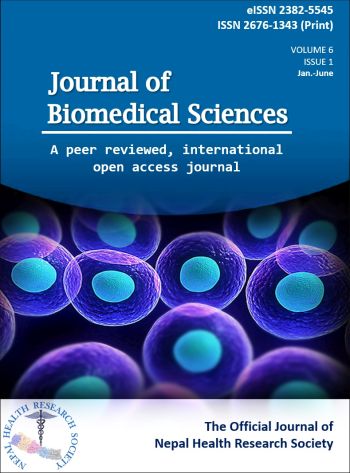CCL5 对脑损伤后的轴突生成和神经元恢复至关重要
IF 9
2区 医学
Q1 CELL BIOLOGY
引用次数: 0
摘要
创伤性脑损伤(TBI)会导致轴突撕裂和突触退化,造成多种神经功能障碍,并加剧早期神经变性;轴突和突触结构的修复对于恢复神经元功能至关重要。C-C Motif趋化因子配体5(CCL5)具有多种神经保护活性。研究人员使用闭头重量下降系统诱导 C57BL/6(野生型,WT)和 CCL5 基因敲除(CCL5-KO)小鼠出现轻度脑损伤。用mNSS评分、旋转木马、横梁行走和移除贴纸测试来检测不同组小鼠轻微脑损伤后的神经功能。损伤一个月后,CCL5-KO小鼠的运动和感觉功能恢复受损,高尔基体染色显示轴突和突触肿胀,突触蛋白-突触素和PSD95减少。给小鼠注射重组 CCL5(预处理:治疗前:损伤前一次 300 pg/g;或治疗后:每两天一次 30 pg/g:通过鼻内给药的方式将 30 pg/g 注入小鼠大脑,持续 1 个月,可改善 CCL5-KO TBI 小鼠的运动和感觉神经功能障碍。利用LC-MS/MS进行的蛋白质组学分析发现,CCL5-KO小鼠损伤皮层中与 "神经系统发育和功能 "相关的蛋白质,包括轴突生成、突触生成和髓鞘化信号通路减少;CCL5治疗前和治疗后均可增强这些通路。免疫染色和免疫印迹分析证实,CCL5能上调脑损伤后皮层组织中与轴突生成和突触生成相关的Semaphorin、Ephrin、p70S6/mTOR信号通路,以及与髓鞘化相关的Neuregulin/ErbB和FGF/FAK信号通路。我们还注意到,脑损伤后长期服用CCL5后,皮质重新发育,Reelin阳性Cajal-Rerzius细胞和CXCR4表达增加。在初级神经元培养系统中,CCL5 可促进生长锥丝状体的生长;马拉维若(Maraviroc)阻断 CCL5 的受体 CCR5 可降低生长锥丝状体的强度,并降低 CCL5 介导的 mTOR 和 Rho 信号激活。抑制 mTOR 和 Rho 信号可消除 CCL5 诱导的生长锥形成。CCL5 在创伤性脑损伤后启动内在神经元再生系统中起着关键作用,该系统包括生长锥的形成、轴突生成和突触形成、髓鞘再形成以及随后大脑皮层回路的正常布线。我们的研究强调了 CCL5 在治疗轻度脑损伤后慢性期轴突损伤和退化方面作为一种强有力的治疗策略的潜力。本文章由计算机程序翻译,如有差异,请以英文原文为准。
CCL5 is essential for axonogenesis and neuronal restoration after brain injury
Traumatic brain injury (TBI) causes axon tearing and synapse degradation, resulting in multiple neurological dysfunctions and exacerbation of early neurodegeneration; the repair of axonal and synaptic structures is critical for restoring neuronal function. C-C Motif Chemokine Ligand 5 (CCL5) shows many neuroprotective activities. A close-head weight-drop system was used to induce mild brain trauma in C57BL/6 (wild-type, WT) and CCL5 knockout (CCL5-KO) mice. The mNSS score, rotarod, beam walking, and sticker removal tests were used to assay neurological function after mTBI in different groups of mice. The restoration of motor and sensory functions was impaired in CCL5-KO mice after one month of injury, with swelling of axons and synapses from Golgi staining and reduced synaptic proteins-synaptophysin and PSD95. Administration of recombinant CCL5 (Pre-treatment: 300 pg/g once before injury; or post-treatment: 30 pg/g every 2 days, since 3 days after injury for 1 month) through intranasal delivery into mouse brain improved the motor and sensory neurological dysfunctions in CCL5-KO TBI mice. Proteomic analysis using LC-MS/MS identified that the “Nervous system development and function”-related proteins, including axonogenesis, synaptogenesis, and myelination signaling pathways, were reduced in injured cortex of CCL5-KO mice; both pre-treatment and post-treatment with CCL5 augmented those pathways. Immunostaining and western blot analysis confirmed axonogenesis and synaptogenesis related Semaphorin, Ephrin, p70S6/mTOR signaling, and myelination-related Neuregulin/ErbB and FGF/FAK signaling pathways were up-regulated in the cortical tissue by CCL5 after brain injury. We also noticed cortex redevelopment after long-term administration of CCL5 after brain injury with increased Reelin positive Cajal-Rerzius Cells and CXCR4 expression. CCL5 enhanced the growth of cone filopodia in a primary neuron culture system; blocking CCL5’s receptor CCR5 by Maraviroc reduced the intensity of filopodia in growth cone and also CCL5 mediated mTOR and Rho signalling activation. Inhibiting mTOR and Rho signaling abolished CCL5 induced growth cone formation. CCL5 plays a critical role in starting the intrinsic neuronal regeneration system following TBI, which includes growth cone formation, axonogenesis and synaptogensis, remyelination, and the subsequent proper wiring of cortical circuits. Our study underscores the potential of CCL5 as a robust therapeutic stratagem in treating axonal injury and degeneration during the chronic phase after mild brain injury.
求助全文
通过发布文献求助,成功后即可免费获取论文全文。
去求助
来源期刊

Journal of Biomedical Science
医学-医学:研究与实验
CiteScore
18.50
自引率
0.90%
发文量
95
审稿时长
1 months
期刊介绍:
The Journal of Biomedical Science is an open access, peer-reviewed journal that focuses on fundamental and molecular aspects of basic medical sciences. It emphasizes molecular studies of biomedical problems and mechanisms. The National Science and Technology Council (NSTC), Taiwan supports the journal and covers the publication costs for accepted articles. The journal aims to provide an international platform for interdisciplinary discussions and contribute to the advancement of medicine. It benefits both readers and authors by accelerating the dissemination of research information and providing maximum access to scholarly communication. All articles published in the Journal of Biomedical Science are included in various databases such as Biological Abstracts, BIOSIS, CABI, CAS, Citebase, Current contents, DOAJ, Embase, EmBiology, and Global Health, among others.
 求助内容:
求助内容: 应助结果提醒方式:
应助结果提醒方式:


